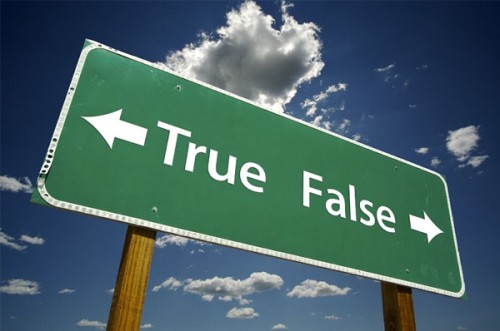
There are many misconceptions floating around about what exercise can and cannot do. Here are some of the most common exercise myths as well as the not-so-common facts based on current exercise research to assist with your workout and fitness goals.
Exercise Myth 1. Low Intensity Workout Burns More Fat
Low intensity exercise shouldn’t be dismissed — it’s less stressful on joints. However, you need to understand thatfat reduction depends on the total energy used or how many calories you burn during the activity. The faster you move in a minute, the more calories you use per minute.However, high-intensity exercise may be difficult, impossible and/or dangerous to sustain when you are just starting an exercise program. Better to be safe than sorry. Begin at a lower intensity and gradually work your way up.
Exercise Myth 2. Spot Reduction Works for Tighter Abs or Toned Arms
You can work your abs or any muscle group until you’re blue in the face. Yes, the muscle will become tighter (more toned) and stronger, but there will be little visible change until the fat on top of the muscle is reduced. When fat reduction is occurring, it is taking place in the whole body, not just one area. Those areas where you carry less fat will become leaner more quickly than areas that have more fat to burn. Be patient and persistent.
Exercise Myth 3: Pre-Exercise Stretching Will Prevent Injuries
There is little evidence stretching prevents injuries.Researchers have discovered that so-called static stretching (striking and holding a pose) can even lessen jumpers’ heights and sprinters’ speeds, without substantially reducing people’s chances of hurting themselves. A better choice is to warm-up dynamically, by moving the muscles that will be called upon in your workout – doing arm circles or walking lunges or high knee tucks.
Exercise Myth 4. If You Exercise Long and Hard Enough, You Will Always Get the Results You Want.
In reality, genetics plays an important role in how people respond to exercise. Studies have shown a wide variation in how different exercisers respond to the same training program. Your development of strength and endurance may be very different from that of another person doing exactly the same thing. Judge your effect by your results, not someone else’s results.
Exercise Myth 5. Exercise Is One Sure Way to Lose All the Weight You Desire.
As with all responses to exercise, weight gain or loss is dependent on many factors, including dietary intake and genetics. All individuals will not lose the same amount of weight on the same exercise program. Adjustments will have to be made along the way; however, I cannot overstate that physical activity is one of the most important factors for successful long-term weight management.
Exercise Myth 6. If You Want to Lose Weight, Stay Away From Strength Training Because You Will Bulk Up.
Most exercise experts believe that cardiovascular exercise and strength training are both valuable for maintaining a healthy weight. Strength training helps build and maintain muscle mass and all that new muscle helps decrease body fat percentage.
Exercise Myth 7. Home Workouts Are Fine, But Going to a Gym Is the Best Way to Get Fit.
Research has shown that some people find it easier to stick to a home-based fitness program. In spite of all the hype on trendy exercise programs and facilities, the “best” program for you is the one you consistently do, no matter where you are.
“Life is like riding a bicycle. To keep your balance, you must keep moving.” – Albert Einstein
Health and happiness,
Kriss
=
Kriss Brooks is a nationally known fitness consultant, personal trainer, and motivational speaker. For more health and wellness tips visit her website at www.options4fitness.com




No Comments